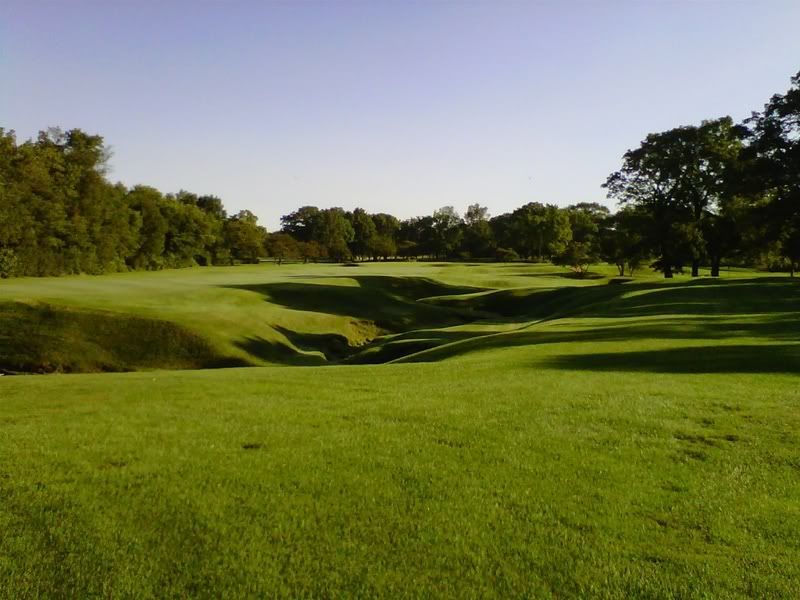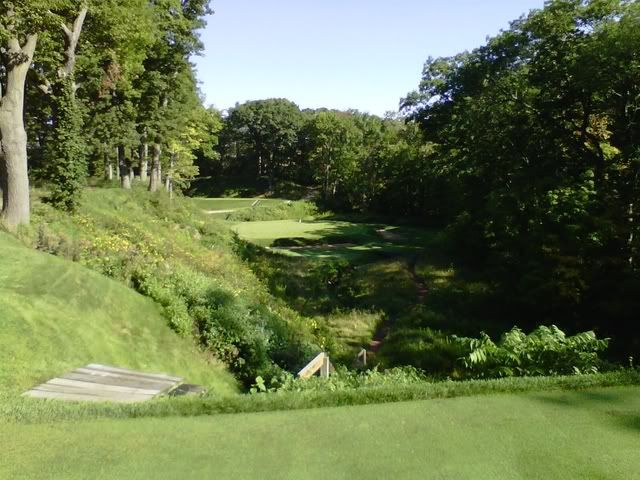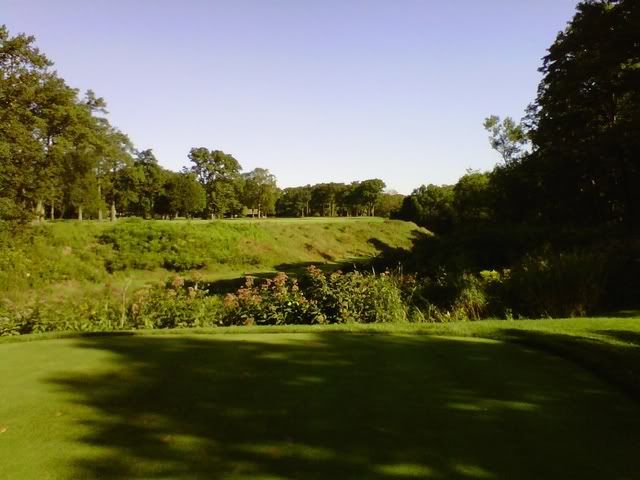I find one of the most important things regarding playing a golf course is the course’s routing. Not being an expert in golf course construction, irrigation, or drainage, I am not qualified to say if a course’s routing is ideal or not. Should hole #2 have been positioned somewhere else? Could a better hole have been developed if the architect took the high road versus the low road? And questions like that are not my specialty. Perhaps it could be argued that unless you actually did the routing (or a routing) for the course, studied the topo maps, walked the property, and got to know the soil, natural formations, and the like…then you don’t know if the routing is ideal or not. But regardless, a golfer (especially one who walks the course) knows if the routing is good, the walk is pleasant, the holes flow one into the next, and the challenges presented from one hole to the next are appealing.
With that in mind, I start this thread about Seth Raynor and Shoreacres.
The routing of a golf course has been touched upon by many fans of golf course architecture. In Brad Klein’s book “Rough Meditations” he has a section called “Routing is Destiny”, in which he says that the routing of a golf course is the most important element. And although he says that most of the time the course’s routing is determined by the developer, we, on GCA.com, seem to assign most of the blame and/or credit of a course’s routing to the architect of the course. For better or worse, maybe the architect is like the quarterback of a football team. The team wins and the quarterback wins and he gets all the credit. The team loses and the QB gets the blame. Perhaps it comes with the territory.
Another thing we talk about on this site is natural looking golf courses. We quote Max Behr all the time about how the hand of man needs to be concealed all the time…nothing but Mother Nature’s work should be noticeable by the naked eye.
But yet, we seem to laud Seth Raynor’s work. Given all his un-natural looking features, geometric bunkering and mounding, I was having a heck of a time reconciling this as the two concepts seemed to be at direct odds with one another. In fact, I started a thread on this exact topic…
http://www.golfclubatlas.com/forum/index.php/topic,47557.0.htmlAlthough some reconciliation regarding the love of Raynor and the acceptance of natural looking golf course was made on my part, deep down I still wondered if Mr. Raynor could be considered truly great. And to make matters worse on my psyche, I read Geoff Shackelford’s “The Art of Golf Design” where he seems to be of the mind that great golf courses have to be natural looking.
So, there I was…kind of stuck on what GREAT golf courses and golf course architects were all about. Who was right? Why were they right? I was keen to find out, but a bit confused. And at this time, I had played The National Golf Links of America (a MacDonald course where Raynor was “discovered”), Lookout Mountain, and Yeaman’s Hall. And then it happened, I got the invited to Shoreacres. Playing this course would answer all my questions regarding these concepts.
On the first hole, I saw a really nice looking golf hole…some cool cross bunkering…a nice green complex…but with some unnatural looking shapes. I felt that my dilemma was coming to a head and I would have my question answered before this round was over.
And as the course flowed by the fourth hole, I felt I knew the answer. I saw this site…

And wondered why the unnatural looking features on the first hole mattered, if I enjoyed the shots and, therefore, the hole.
I don’t know if seeing the ravine/swale really had much to do with my question directly, but I knew that this course would be defined not by the mounding of the humps and hummocks or the shapes of the bunkers. Rather it would be highly correlated to the architect’s use of the land the course was on. And in this case the most striking geographical feature was this ravine. And Raynor used this ravine like a maestro.
Much like the sand dune Ross had to deal with at Seminole, Raynor had the swale/ravine at Shoreacres. He takes you up over that ravine, beside that ravine, down into the ravine, and back out.


He took the most striking feature of the land and embraced it and made the golfer never forget it. In fact, maybe it could be said that a great course knows it place and anyone who plays it will never forget that place. Due to this meshing of the course and the land the course it is on, a course cannot be replicated with much success on another site. It is simply too unique, if routed well. And if routed well, that means embracing natural features…and maybe that is very much akin to building natural golf courses.
In fact, you can use the same hole concepts (redan, eden, short, long, Biarritz, etc) but if you embrace the natural features of the land that each and every hole is built on, then the holes will feel unique and they will feel more natural than they might look in a photograph. And it was seeing photographs of golf courses without being on the courses that was causing my dilemma. Perhaps this relates to another thread we had on GCA not too long ago…
http://golfclubatlas.com/forum/index.php/topic,47494.0.htmlWhat I found out during my round at Shoreacres was that to me the routing is key. And in my non-technical way of looking at it routing centers on…how does the course flow and how naturally do the holes fit together. Route the course well and it will have to naturally fit with the land and the end product will be a memorable golf course that will be unique and all its own. I believe Raynor does this…and, therefore, Raynor is indeed a great architect.